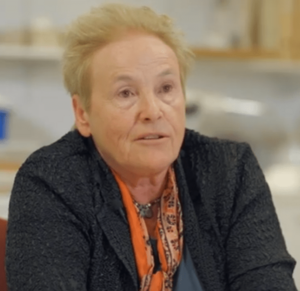Sue O'Connor facts for kids
Quick facts for kids
Sue O'Connor
FAHA FBA
|
|
|---|---|

In an ANU video in 2018
|
|
| Alma mater | University of New England (Australia) (1980) University of Western Australia (1991) |
| Awards | Rhys Jones Medal for Outstanding Contribution to Australian Archaeology (2011) |
| Scientific career | |
| Fields | archaeology |
| Institutions | University of Western Australia Australian National University |
Sue O'Connor is a famous Australian archaeologist. She is a Distinguished Professor at the Australian National University. Her work mainly looks at how early humans settled the Pleistocene era and moved around the Indo-Pacific region.
Contents
Learning and Studying
O'Connor studied archaeology at the University of New England (Australia). She finished her first degree with high marks in 1980. Later, she continued her studies at the University of Western Australia. There, she earned her PhD, which is a very high degree, in 1991.
Her Work as an Archaeologist
O'Connor started as a lecturer at the University of Western Australia (UWA) in 1991. She taught there until 1994. In 1994, she moved to the Australian National University (ANU). She became a research fellow in the Department of Archaeology and Natural History. By 2005, she was promoted to lead the department. In 2008, she became a full Professor.
Professor O'Connor has led many archaeological digs. These projects took place in Australia's Northern Territory and the Kimberley (Western Australia) region. She also worked in Indonesia, Papua New Guinea, and Timor Leste. Her discoveries show that ancient people lived in the Kimberley region over 40,000 years ago. Her research also found the oldest signs of rock art in Australia.
Amazing Discoveries
East Timor Cave Finds
O'Connor led a team that found a cave in East Timor. This cave showed signs of people living there more than 42,000 years ago. This is the oldest proof of modern humans living on the islands. These islands were like stepping stones from South-East Asia to Australia. Before O'Connor's work, experts thought early humans traveled north through Borneo and Sulawesi. Then they believed they went south through Papua New Guinea to Australia. But with her new findings, O'Connor thinks early humans traveled south. They likely went through East Timor to reach Australia.
Ancient Dogs in East Timor
O'Connor was part of a team that studied a dog burial site. This site was found at Matja Kuru in East Timor. Their findings suggest that humans had pet dogs there as early as 3,000 years ago. Scientists looked closely at the dog's bones. They found many similarities between this ancient dog and modern pet dogs. O'Connor and her team believe that having pet dogs might mean people were still hunting and gathering food back then.
Oldest Fish Hooks Found
In 2017, Professor O'Connor's team made another big discovery. They found the world's oldest fish hooks at an ancient burial site. This site is on Alor Island, Indonesia. Five round, spinning fish hooks were found. They were likely used for deep-sea fishing. These hooks were found near the head of an adult female skeleton. She was buried about 12,000 years ago. This discovery changes what we thought about fishing in ancient times. It suggests that women were also involved in fishing activities. Before 2017, the oldest fish hooks found with a burial were from Siberia. Those were about 9,000 years old.
In July 2024, O'Connor was chosen as a Corresponding Fellow of the British Academy. This is a very important honor.
Awards and Honors
- 1999–2003 Australian Research Council QEII Fellowship
- 2007 Elected Fellow, Australian Academy of the Humanities (FAHA)
- 2011 Rhys Jones Medal for Outstanding Contribution to Australian Archaeology
- 2012 Australian Research Council Laureate Fellowship
- 2018 ANU Vice-Chancellor's Award for Excellence in Research
- 2024 Elected as a Fellow of the British Academy

